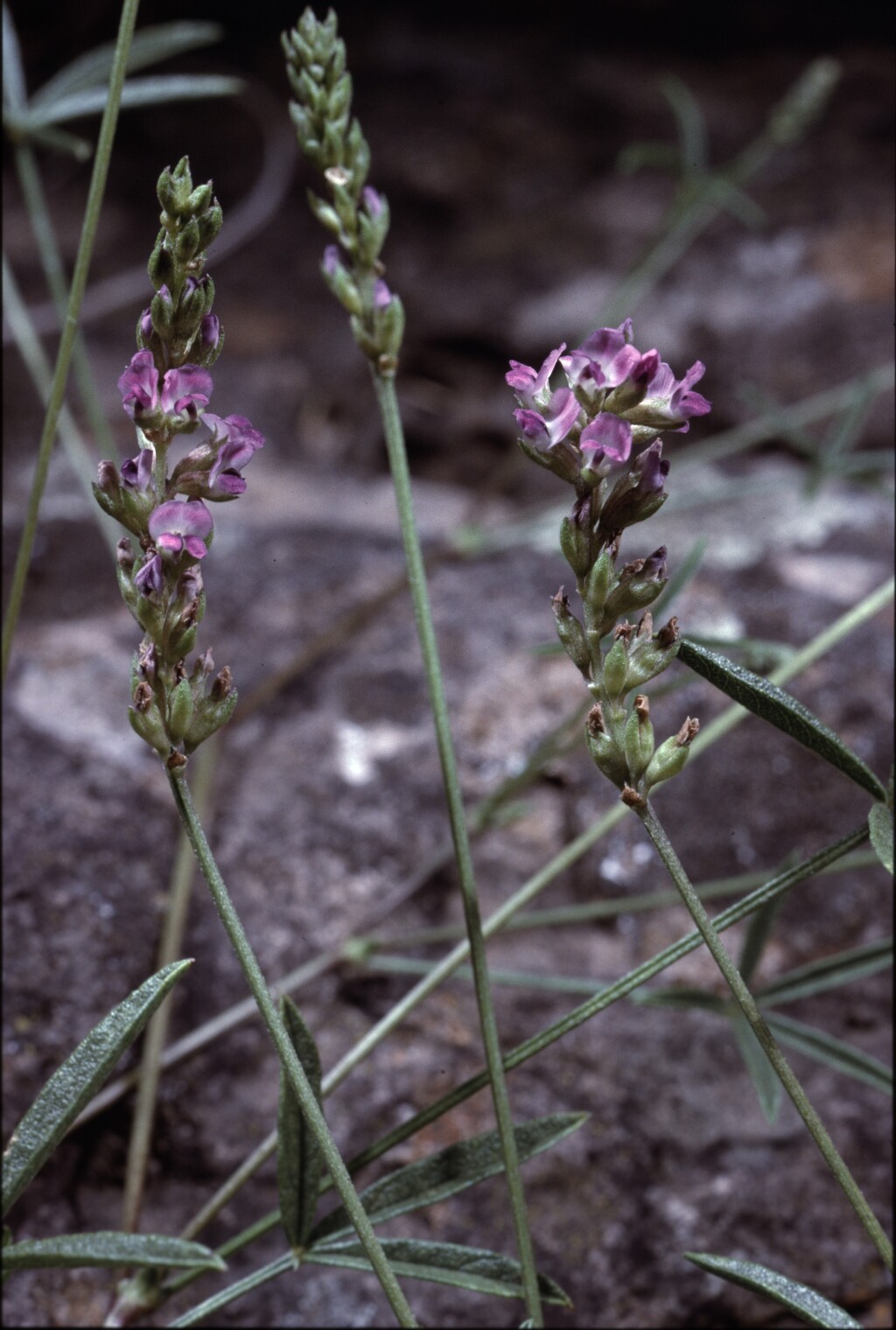Cullen
Annual or perennial herbs, subshrubs or trees (not in Victoria), conspicuously gland-dotted; stems erect or spreading, glabrous or pubescent. Leaves alternate, pinnately or palmately 1–7-foliolate (mostly 3–5-foliolate in Victoria), long-petiolate, margins of leaflets entire or toothed; stipules variable, attached by a broad base. Inflorescence a peduncled few- to many-flowered axillary (pseudo)raceme (in Victoria), spike or pseudo-umbel; flowers small, pedicellate, scarcely exceeding calyx; bracts membranous, caducous, each subtending 1–3 flowers; cupulum absent; bracteoles absent. Calyx glabrous, glandular-punctate or densely pubescent; teeth nearly equal or lower one largest and upper 2 fused for most of their length, persistent in fruit; petals clawed, white, blue, purple or pink; standard obovate, short-clawed; wings oblong with a prominent basal lobe, longer than keel; keel broadly obliquely lunate, obtuse; stamens diadelphous, upper stamen free or connate with other 9, anthers uniform; ovary substipitate, ovule 1, style incurved, stigma terminal. Pod about as long as calyx, ovoid to obovoid, often black glandular-warty when mature, indehiscent and adhering to seed, 1-seeded; aril absent.
About 31 species, a few in drier parts of Africa but most from southern Asia, South-east Asia and Australia; 21 species in Australia.
The taxa in this genus were formerly included under Psoralea L. but can be distinguished readily by the seed adhering to the pericarp and their lack of a cupulum subtending the flower pedicel.
Apparently often flowering in response to rain.
Jeanes, J.A. (1996). Fabaceae. In: Walsh, N.G.; Entwisle, T.J., Flora of Victoria Vol. 3, Dicotyledons Winteraceae to Myrtaceae, pp. 663–829. Inkata Press, Melbourne.
 Spinning
Spinning

